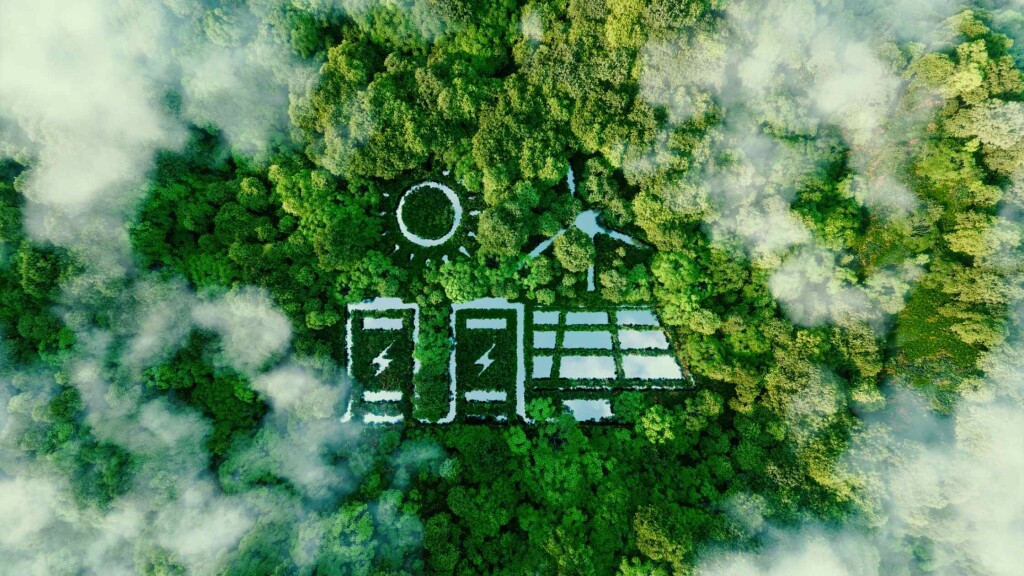
Just when it seemed the world might be returning to some version of “normal”, the Russian invasion of Ukraine taught us, once again, that it is perhaps more cogent to expect the unexpected. We’ve covered the ramifications of this war on the legal community in Russia, Ukraine and beyond. In this issue, we take a moment to consider the consequences of the ongoing conflict on energy markets globally, including volatility in fossil fuel prices and the reassessment of energy security risks, together with an update on projects across the Middle East and Asia.
CONFLICT CAUSING CRISIS
The International Energy Agency (IEA) has called the energy fallout following the war in Ukraine our “first truly global energy crisis in history”.
The European Union is directly reliant on Russia for gas, with 40% of the EU’s gas coming from Russia in 2021, accounting for 75% of Russia’s exported gas volume. China and Japan are similarly large importers of gas, seeing 9.2 and 8.8bcm, respectively from Russa each year. European nations also take top spot as users of Russian oil, accounting for two-thirds of Russia’s exports, with a fifth exported to China (the single biggest buyer in 2021 according to the IEA). These figures are, however, expected to change significantly in the short term as nations rethink reliance on Russian fuels.
Ramifications of this instability, of course, extend far beyond these direct importers. While the COVID-19 pandemic saw global oils prices slump to USD 14 per barrel in April 2020, March 2022 saw them fly to USD 133 in the wake of Russia’s invasion of Ukraine. Cost of living prices globally have followed suit.
This volatility in pricing over the last 2.5 years, together with war-related impacts on imports, highlights ever more clearly the need to prioritise resilience and energy security. The EU, for instance, has reacted to the situation in Ukraine with proposals to reduce gas imports from Russia by two-thirds within the year. Alternative supplies of liquefied natural gas (LNG) are expected to replace some of this shortfall. Further substitution is set to be achieved through reducing gas consumption and prolonging the use of domestic nuclear plants which had been committed to being shut down, together with speeding up the implementation of solar and wind projects. This is reflective of Bain & Co’s reporting that this crisis is expected to accelerate the renewable energy transition globally as jurisdictions move to reduce external dependencies. Green energy, they say, will increasingly be associated with the localisation of energy supply.
We take a brief look now at some developments in energy and projects across the Middle East and Asia.
MIDDLE EAST
Middle Eastern nations are well known for their wealth derived from abundant reserves of oil and gas, and fossil fuels have naturally dominated their energy usage. GlobalData reported that more than 90% of the total energy consumption in the region in 2021 comprised thermal power, with the main source being natural gas.
There have, however, been moves toward greener energy. Saudi Arabia, for instance, announced its Vision 2030 plans in 2019 which include a commitment to developing and installing 58.7GW of renewable power sources by 2030, which would account for approximately 30% of the kingdom’s power mix. In line with these sentiments, HSBC in its Sustainable Finance and Investing Survey 2019, predicted that 85% of issuers and investors in the Middle East would be reallocating capital to green financing goals by 2025.
These pre-2020 commitments and predictions did not, however, anticipate a global pandemic and the Russian invasion of Ukraine. In 2020, Norton Rose Fulbright reported that clean energy transitions in these hydrocarbon-dependent economies were necessarily taking a back seat to public spending on healthcare and remedial packages to overcome the pandemic and slump in oil and gas export revenues, which the International Monetary Fund estimated to be approximately USD 230bn.
On the back of this, Russia’s invasion of Ukraine and the ensuing sanctions it faces are similarly expected to have an impact. Countries seeking to reduce energy reliance on Russia will be forced to look elsewhere, resulting in a projected increase in natural gas production in the Middle East for the coming decade.
Despite these obstacles, countries in the Middle East remain dedicated to green transition. Saudi Arabia has committed to doubling its capacity amount in renewable tenders this year and next to speed up growth in wind and solar projects.
The war, while increasing demand for non-Russian oil and gas, may also incentivise renewable energy installation. Miguel Brito, analyst at Platts Analytics, reported:
“For some GCC countries such as Saudi Arabia, the situation may renew focus on displacing oil in the power mix with natural gas and solar energy to free capacity for more valuable exports as well as positioning them as key partners for European markets in the energy transition through green hydrogen. This could spur action on deploying the levels of solar capacity needed to achieve the nation’s aggressive target of 50% renewable energy generation by 2030.”
The next two UN climate change conferences will be held in the region, with COP 27 being held in Sharm el Sheikh, Egypt in November 2022, and COP 28 in the UAE in November 2023.
INDIA
India set a target of reaching 175GW of renewable energy capacity by this year, made up from 100GW of solar, 60GW of wind, 10GW of biomass power and 5GW of small hydropower. However, the Minister of State for New and Renewable Energy, Bhagwanth Khuba, has reported that as of 30 June 2022, only 114GW of renewable energy capacity has been installed in the country. He added, however, that a further 60GW is in implementation at various stages, with 23GW at bidding stage. This has brought the share of renewable energy in the total installed electricity capacity in India to 39.86%.
While some hurdles, including the pandemic and funding, have cut the country short of reaching its 2022 goals, the Ministry of New and Renewable Energy has further committed to achieving 500GW of installed electricity capacity from non-fossil sources by 2030.
Part of India’s renewable energy capacity has come from the development of its largest floating solar power project in a single location, which reached completion in Telangana this year. This 100MW plant was set up by energy conglomerate, National Thermal Power Corporation, through Bharat Heavy Electricals. Floating solar panels serve to reduce evaporation rates, thereby further aiding in water conservation. It is anticipated to replace coal consumption of 165,000 tons and CO2 emissions of 210,000 tons per year.
A gigantic floating solar plant, expected to be the world’s largest, is further being planned for the central Indian state of Madhya Pradesh which is anticipated to generate 600 MW of power by 2023.
CHINA
While India plans what it hopes to be the world’s largest floating solar plant, the top spot is currently held by the Dezhou Dingzhuang Floating Solar Farm which started operating at full capacity in January of this year. The 320MW plant was built and installed by Sungrow Power, a world leader in the production of photovoltaic panels, along with Huaneng International, an electricity company that invested in the project and took part in its implementation.
Progress is also being made in major hydropower and nuclear power projects, including hydropower construction on the Yarlung Zangbo River and the coming into full operation this year of the Baihetan Hydropower Station – the world’s second-largest hydroelectric complex after the Three Gorges Dam (also in China).
This is in line with China’s 14th five-year plan, 2021 to 2025, in which it targets renewable supplies to comprise 33% of total national consumption by 2025. This comes on the back of China’s announcement in 2020 of an ambitious plan to reduce its carbon emissions by 2060 through an 80% reliance on non-fossil fuel sources.
However, not all focus has been on cleaner energies. Global Times reported an overall ramping up of domestic energy output in the wake of rising and unpredictable global energy prices. This has included the approval of high-caliber coal mines with advanced production capacity. Total energy production in 2022 is expected to reach about 4.41 billion tons of standard coal, 200 million tons of crude oil and 214bcm of natural gas, all increases year-on-year, according to the energy work guidance for 2022 released by the National Energy Administration earlier in the year.
SOUTHEAST ASIA
Southeast Asia has been an aggregate importer of oil since the 1990s, with over 40% of the region’s energy currently imported. ASEAN countries are, however, collectively aiming for a 23% reliance on renewable energy by 2025.
An obstacle to this target may be the speed at which energy needs are growing in the region. Energy Tracker Asia (ETA) reports that in line with Southeast Asia’s rapid economic development, the region’s energy demands are forecast to increase by 60% by 2040.
The IEA, however, reports that the region appears well on its way to meeting this challenge with annual average energy investment of around USD 70 billion in Southeast Asia between 2016 and 2020, 40% of which went into clean energy technologies, particularly solar PV, wind and grids.
ETA, in their ASEAN Energy Outlook 2022, reported notable progress emanating from Vietnam, which approved 11.8GW of wind power, while Philippines is developing offshore wind farms with 3.5GW of generation capacity.
Over in Thailand, which has committed to achieving carbon neutrality by 2050 (as updated from its previous target of 2065), the northeastern province of Ubon Ratchathani has seen the development of the Sirindhorn dam floating solar farm which, with its 45MW capacity, is anticipated to reduce carbon emissions in the country by 47,000 tons per year through its creation of solar power in the day and hydropower after dark.
The Future appears Bright
Given these developments, particularly in the area of greener energies, it appears countries globally are rising to the dual challenge of both keeping the lights on in the face of a pandemic and war, and doing so in ways that are sustainable and promotive of domestic energy security. We hope to see this progress gaining steam as economies rebound post-pandemic.
This article was published in the September, 22 issue of the IHC Magazine. To read the fill magazine, please click here

















